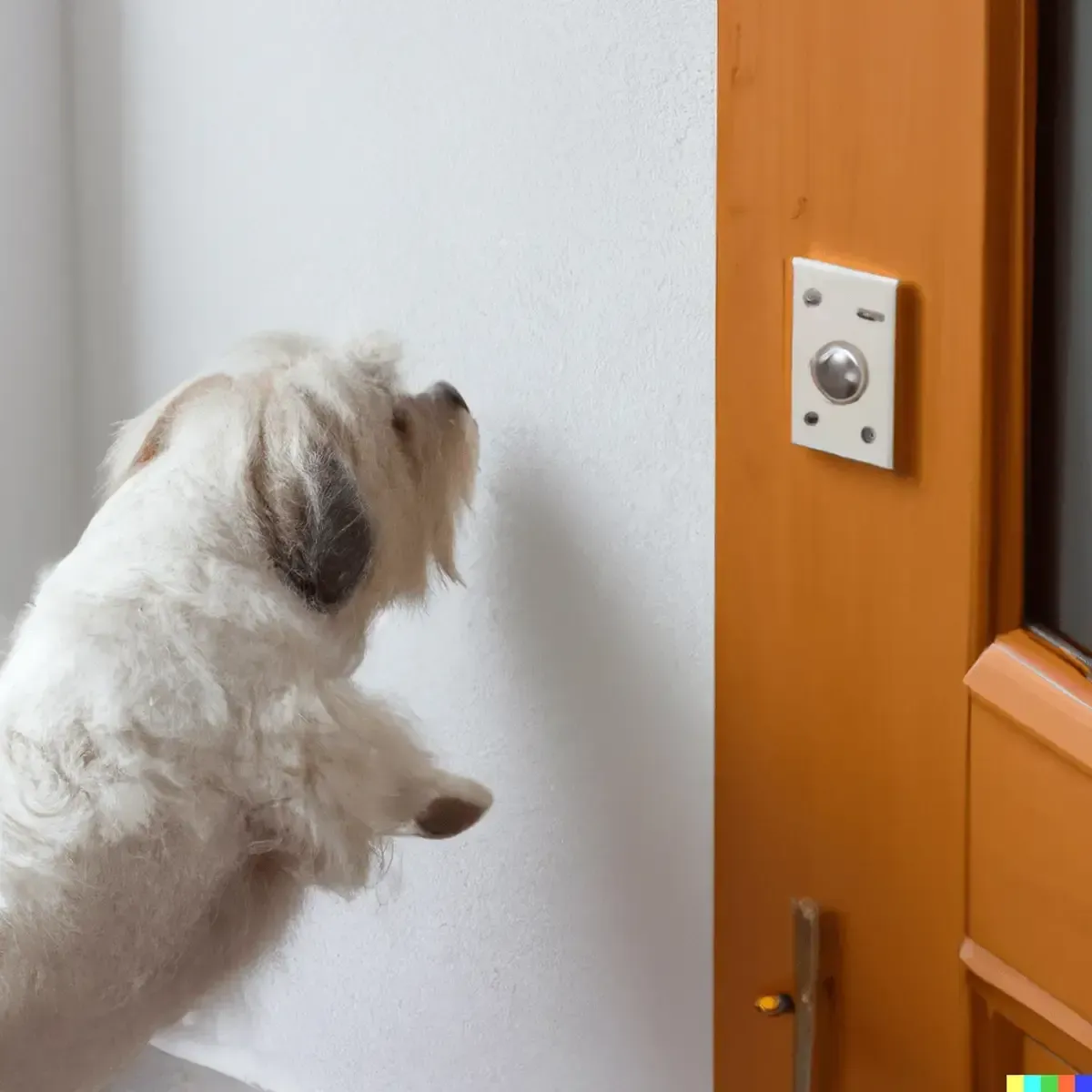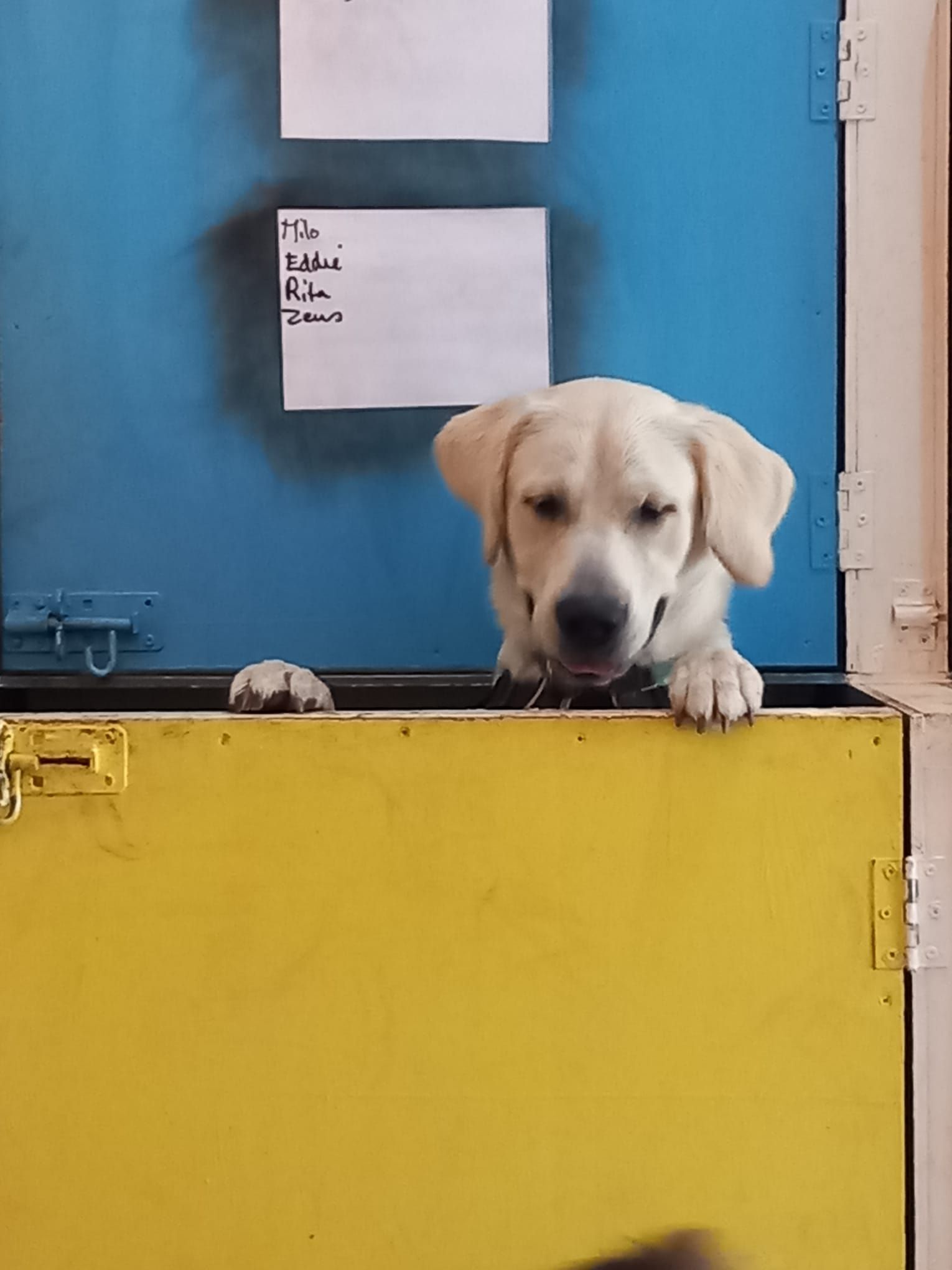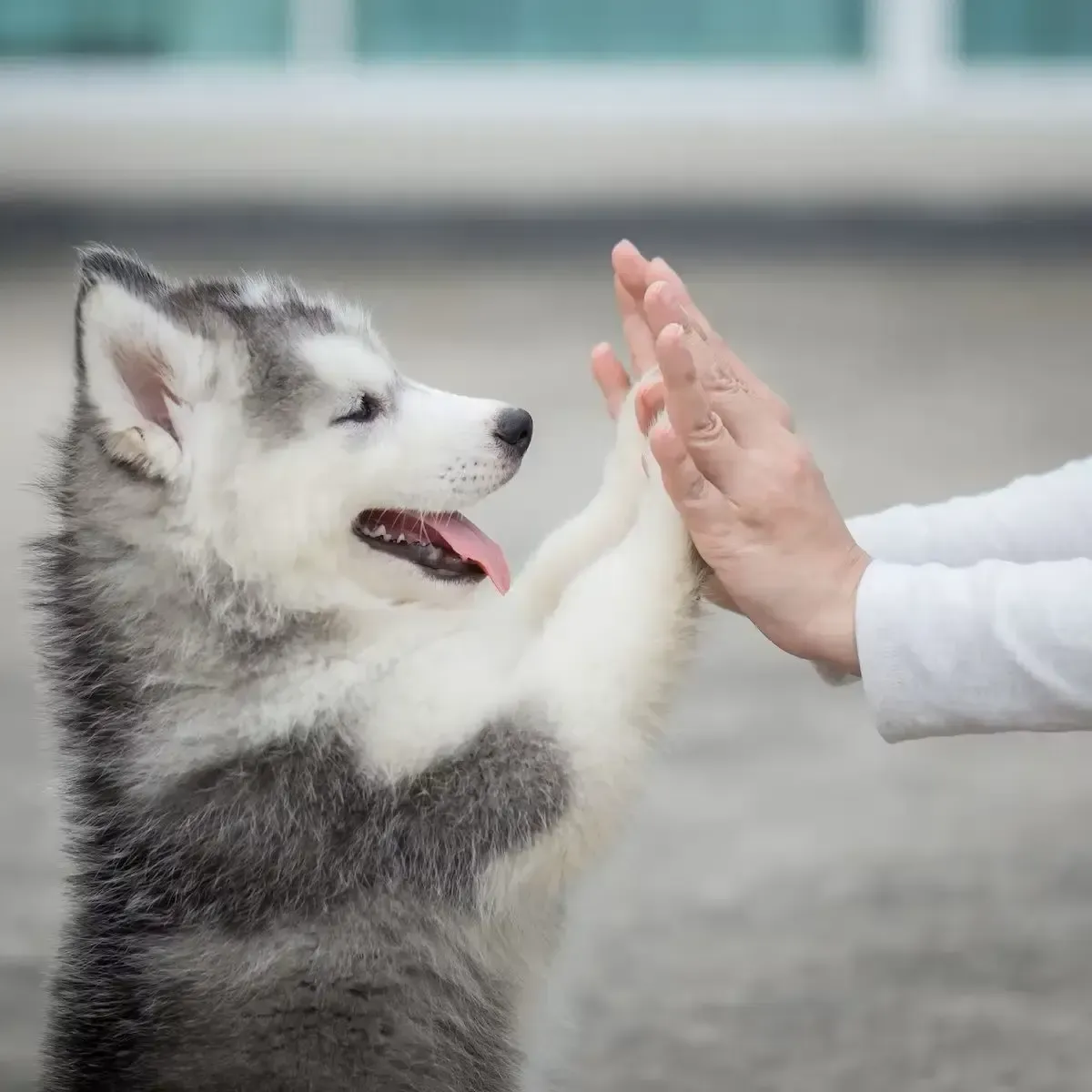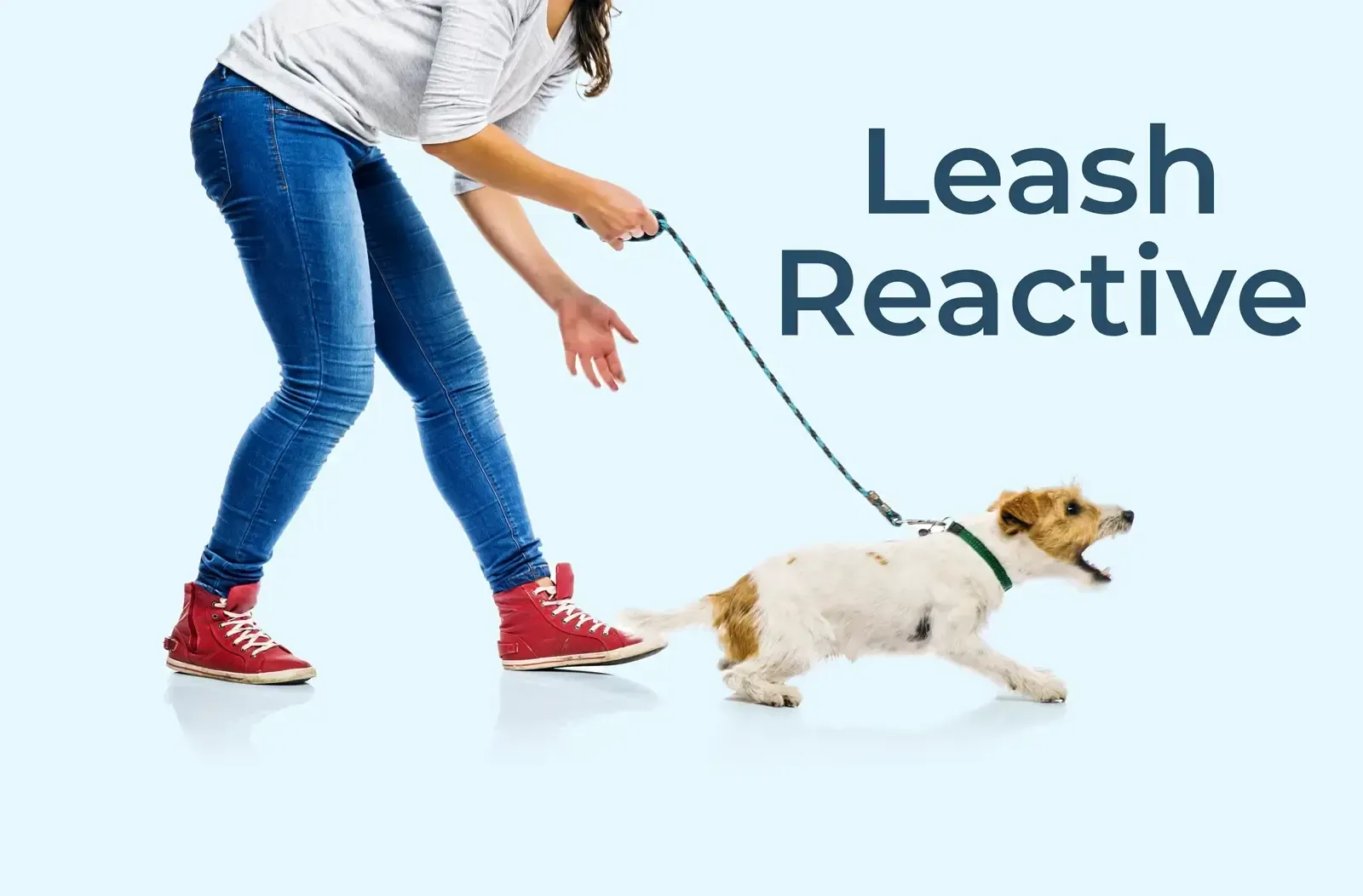Dog Barking
Dog barking - what can I do ?

Disclaimer - This blog is intended for information purposes only. If in doubt always seek help from a dog trainer.
Barking
Barking is one of various techniques of vocal communication used by dogs. Others are typically pleased when their dog barks since it alerts them to the presence of people within their home or shows that the dog desires or requires something. A dog's barking, on the other hand, might be excessive at times. Because barking serves several functions, you must first determine the reason for the barking and your dog's motivation for barking before you can address a barking problem.
For a dog, each type of barking has a distinct function, and if he is repeatedly rewarded for it—that is, if it gets him what he wants—he may learn to use barking to his advantage. Dogs that efficiently bark for attention, for example, regularly bark for food, play, and walks. As a result, it's vital to train your dog to remain silent on command so that you may stop his attention-related barking and teach him to do something else, like sit or down, to get what he wants.
Many dog owners can identify why their dog is barking just by hearing it. A dog's bark, for example, differs depending on whether he wants to play or come in from the yard. If you want to reduce your dog's barking, you must first determine why he is barking. Training your dog to quit barking can take some time. Unfortunately, expecting a quick fix or your dog to cease barking completely is impractical. (Would you anticipate someone abruptly ceasing to speak?) Your goal should be to lessen, not eliminate, the amount of barking. Keep in mind that certain dogs are more inclined to bark than others. Furthermore, some breeds are known as "barkers," and it may be more difficult to eliminate barking in these individuals.
What causes dogs to bark?
Territorially barking
When people, other dogs, or other animals enter or approach their area, dogs may bark excessively. Your dog's territory includes the area surrounding his house and, eventually, whatever he has investigated or firmly associated with you: your car, the route you go on walks, and other places he spends a lot of time.
The alarm is sounding
Your dog is most likely alarm barking if he barks at every noise and sight, regardless of context. Alarm barking dogs have more rigid body language than welcoming barking dogs, and they typically spring or leap forward an inch or two with each bark. Alarm barking varies from territorial barking in that a dog can alarm bark at any time and in any area, rather than just while guarding recognised sites such as your home, yard, or car.
Trying to get your attention
Some dogs bark at humans or other animals in order to get their attention or to gain rewards such as food, toys, or play.
Greetings from barking
If your dog barks when he meets humans or other dogs and his body is relaxed and enthusiastic, with his tail wagging, he might be welcoming. Dogs who bark to greet people or other animals may whimper as well.
Barking compulsively
Some dogs bark endlessly, almost monotonously. These canines move in a repetitive fashion as well. A dog who is incessantly barking, for example, may walk around his home or move back and forth along the fence in his yard.
Barking that is socially encouraged
Some dogs howl excessively only when they hear other dogs barking. This form of barking occurs in the social context of hearing other dogs, even if they are a long distance away—for example, dogs in the neighbourhood.
Dissatisfaction causes barking
Some dogs scream excessively only when they are placed in an inconvenient situation, such as being unable to access playmates or being confined or tied up, limiting their movement.
Other factors contributing to barking
Illnesses or Injuries
Dogs will occasionally bark in reaction to pain or discomfort. Before attempting to solve your dog's barking problem, please get your dog examined by a veterinarian.
Anxiety-induced barking
Excessive barking due to separation anxiety occurs only when the dog's caretaker is not there or when the dog is left alone. Pacing, destruction, elimination, despair, or other signs of pain are frequent symptoms of separation anxiety. Seek help from professionals when dealing with anxiety induced barking.
What Should You Do If Your Dog Never Stops Barking?
The first step in reducing your dog's barking is to identify the type of bark your dog is making. The questions below can help you establish which type of barking your dog is doing so that you can treat your dog's problem more effectively.
Consider your answers to these questions as you go through the information on the various types of barking and their treatments below.
When and where does the barking occur?
What or who is the intended target of the barking?
What is the source of the barking (things, sounds, animals, or humans)?
What's the story behind your dog's barking?
If the barking is territorial or alarm barking
Territorial behaviour is typically motivated by a mix of anxiety and anticipatory fear of a looming danger. Because protecting territory is such a high priority for dogs, they are greatly motivated to bark when they detect the approach of unknown persons or animals in familiar settings, such as their homes and yards.
Because of this strong desire, your dog may ignore unpleasant or punishing responses from you, such as scolding or yelling, while barking territorially. Even if the barking stops, your dog's need to protect his territory will remain strong, and he may attempt to control his territory in other ways, such as by biting without warning.
Dogs utilise territorial barking to alert others to the presence of guests, to frighten off intruders, or to do both. A dog may bark when he sees or hears visitors approaching the door, the postal man carrying the mail, or the maintenance person reading the gas metre. He may also react to people and animals going by your home or apartment. When some dogs are in the car and see humans or other dogs pass by, they become tremendously upset. Based on his body position and demeanour, you should be able to discern if your dog is barking to say "Welcome, come on in!" or "Hey, you'd best hit the road!" "You are not invited to my home!"
Use the welcome barking therapy recommended in this article if you have a dog in the first category (below).
If you have a dog that isn't friendly to humans, you'll have a greater chance of success if you limit your dog's ability to see or hear passers-by and encourage him to associate the presence of strangers with pleasant things like food and attention. Reduce your dog's incentive as well as his opportunity to guard his territory to treat territorial barking. You can block your dog's ability to see humans and animals in order to regulate his behaviour. Removable plastic film or spray-on glass coatings can help to limit your dog's visibility of areas he watches and guards from within your home. Encircle any outside areas that your dog has access to with secure, opaque fencing. Refrain from allowing your dog to greet guests at the front door, front yard gate, or property border. Instead, instruct him to move to a separate location, such as a cage or a mat, and remain silent or wait until he is silent and until he is appropriately invited to meet.
Alarm barking, like territorial barking, is produced by both sights and sounds. Alarm barking dogs, on the other hand, may do so in reaction to things that worry or distress them when they are outside of their regular zone.
A dog, for example, would generally only bark territorially when he sees others coming when he is in his own house, yard, or car. A dog who barks to notify outsiders may also bark when he sees or hears strangers approaching in other locations. Although territorial barking and alarm barking are separate issues, the suggestions below apply to both.
Training "quiet" manners
If your dog continues to alarm bark or bark territorially despite your efforts to keep him away from sights and noises that might provoke him to bark, consider the following techniques:
- When someone comes to the door or passes by your property, teach your dog that he is permitted to bark until you say "Quiet."
- Allow three to four barks from your dog.
- Next you say "Silence".
- Avoid yelling. It can be counterintuitive. Simply state the demand clearly and gently.
- Then return to your dog, softly seal his snout with your palm, and say "Quiet." Don’t forget to be gentle as you are holding dog’s muzzle!
- Release your dog’s muzzle, step away, and call him away from the door or window. Then ask your dog to sit and give him a treat.
- If he stays by you and keeps calm for a few minutes, continue to give him regular rewards until whatever sparked his barking is gone.
- If your dog resumes barking right away, repeat the sequence above. Do the same outside if he barks at passersby when he’s in the yard.
If you prefer not to hold your dog’s muzzle or if doing so seems to scare your dog or make him struggle, you can try a different method. When your dog barks, approach him, calmly say “Quiet or shhhh,” and then prompt his silence by feeding him a steady stream of tiny, pea-sized treats, such as chicken, hot dogs or bits of cheese. After enough repetitions of this sequence, over several days or more of training, your dog will begin to understand what “Quiet” means. You’ll know that he’s catching on if he consistently stops barking as soon as he hears you say “Quiet.” At this point, you can gradually extend the time between the cue, “Quiet,” and your dog’s reward. For example, say “Quiet,” wait 2 seconds, and then feed your dog several small treats in a row. Over many repetitions, gradually increase the time from 2 seconds to 5, then 10, then 20, and so on.
If the “Quiet” procedure is ineffective after 10 to 20 attempts, then allow your dog to bark 3 to 4 times, calmly say “Quiet,” and then immediately make a some other noise by shaking a set of keys, dog’s harness or lead as if you are taking him for a walk – anything distracting. If your dog is effectively distracted by the sound, he’ll stop barking. The instant he does, call him away from the door or window, ask him to sit, and give him a treat. If he stays beside you and remains quiet, continue to give him frequent treats for the next few minutes until whatever triggered his barking is gone. If he resumes barking right away, repeat the sequence. If this procedure doesn’t work after 10 to 20 attempts, please seek Professional Help.
If your dog barks at people or other dogs during walks, distract him with special treats, like chicken, cheese or hot dogs, before he begins to bark. (Soft, very tasty treats work best.) The key to success is that treats must be given before the dog start barking rather than after. Show your dog the treats by holding them in front of his nose, and encourage him to nibble at them while he’s walking past a person or dog who would normally cause him to bark. Some dogs do best if you ask them to sit as people or dogs pass. Other dogs prefer to keep moving. Make sure you praise and reward your dog with treats anytime he chooses not to bark.
It may help to have your dog wear a head halter, muzzle, figure of 8 around the body, at times when he’s likely to bark (for example, on specific places during the walk). A halter or muzzle can have a distracting or calming effect and make your dog less likely to bark. Make sure you reward him for not barking. (Important note: For safety reasons, only let your dog wear the halter or muzzles for very short bursts no longer than a few minutes.)
If your dog most often barks territorially in your yard, keep him in the house during the day and supervise him when he’s in the yard so that he can’t just bark his head off when no one’s around. This type of unsupervised barking head off behaviour will likely result in an entrenched barking behaviour. If he’s sometimes able to engage in excessive alarm barking (when you’re not around, for example), that behaviour will get stronger and harder to reduce. Especially seen in left alone roaming free dogs.
If your dog most often barks territorially in your car, teach him to ride in a crate while in the car. Riding in a crate will restrict your dog’s view and reduce his motivation to bark.
“Go to Your Spot” Training
It also helps to teach your dog a specific set of behaviours to do when people come into your home so that he has fewer opportunities to alarm bark. Plus, when your dog performs his new behaviours and receives rewards, he’ll learn that people coming into his and your space is a good thing.
Steps
- Before you can teach your dog to go to a certain location and stay there when a door opens, you must first teach him to sit or lie down and then to stay. After your dog has mastered these tasks, you can go on to
- Determine a location in your house where you want your dog to go when visitors arrive. Choose a location that is at least eight feet distant from the front entrance yet still visible. It may be a space at the top of a flight of stairs, inside an adjacent room's doorway, your dog's crate, or a rug in the far corner of an entryway or foyer. Put a matt down in that place
- Say "Go to Matt," then show your dog a treat and throw it on the spot where you want your dog to go. This procedure should be repeated 10 to 20 times. By the tenth time, try pretending to throw the reward so that your dog starts moving toward the location on his own. Throw the reward to him as soon as he's standing on his place or mat. When your dog understands, you may stop making the fake tossing motion with your arm and just tell him, "Go to your position." Then wait for him to do so before rewarding him.
- When your dog is consistently going to his location, change where you are when you send him there. Experiment with asking him to go to his position from various angles and distances. Say "Go to your location" when you're standing a few feet to the left of it, for example. After a few repetitions, take a few feet to the right of the location and say, "Go to your spot," from there. Then proceed to another region of the room, then another, and so on. Eventually, practise standing at the front entrance and commanding your dog to go to his position, just like you would when guests come.
- When your dog has mastered getting to his area, begin asking him to sit or down when he arrives. Say "Yes!" and praise your dog with a yummy treat as soon as his rear end hits the floor on the spot. Then respond, "OK," and let him to go away. Each training session, repeat these steps at least ten times.
- Now include staying into your workout. Place yourself near to your dog's favourite area. Ask him to sit or lie down, then say "Stay" for one second. Then tell him "Yes!" or "Good!" and give him a reward. After you've given your dog the treat, say "Okay" to release him from the stay and encourage him to move. This sequence should be repeated at least ten times every training session. Gradually increase from one second to several seconds, but vary the period so that the exercise is simple sometimes (a shorter stay) and difficult other times (a longer stay). If your dog gets up before you say "Okay," say "Uh-uh!" or "Oops!" and promptly instruct him to sit or lie down again on his position. Then, the next few times, make the exercise a bit simpler by asking your dog to keep the stay for a shorter period of time. Avoid pushing your dog too quickly or trying him to see how long he can stay before getting up. This is a recipe for disaster for your dog. You want him to succeed at least eight out of ten times in a row.
- You can start going toward the door when your dog can consistently stay on his position for at least 30 seconds with you standing in front of him. Say "Go to your spot," lead your dog to his location, ask him to sit or lie down, and then ask him to remain. Simply divert your head away from your dog at first. Then turn around and offer him a reward before releasing him from his confinement. Increase the difficulty after a few repetitions. Ask your dog to stay once he has sat or laid down on his position, and then take one step toward the door. Return promptly, give your dog a reward, and then use your release word or phrase to let him out of the stay. Increase the number of steps you take away from your dog and toward the door gradually. You'll eventually be able to walk all the way to the door and back as your dog sits or lies down on his place. (Don't forget to continue paying him for sticking around!) If your dog rises up or leaves his location before you let him out of the stay, exclaim "Oops!" as soon as he does. Then advise him to sit or lie down on his spot again and to stay. Wait a few seconds before releasing him. You may have advanced too quickly. Make the activity a bit simpler the next time so your dog can succeed. Request that he stay for a shorter length of time and refrain from moving as far away from him. When he is effective at an easier level, you may progressively increase the difficulty of the activity. Never put an end to your dog's stay from afar. Instead, always go back to him, say "Yes," give him a reward, and then say "Okay" to let him go.
- You can begin to add distractions when your dog can regularly stay in a sit or a down on his spot for 30 seconds while you turn away and walk to the front door. Tell your dog to stay, then do something distracting to keep him busy. At start, keep your distractions to a minimum. Begin by bending down or performing a single jumping jack or anything silly, for example. Over the course of many training sessions, progressively increase the intensity of your diversions to things like taking a few steps or tossing a reward on the floor. Reward your dog immediately after each distraction for maintaining the stay. If he violates the stay, say "Uh-uh," ask him to sit or lie down on his place, and try again. When your dog can remain while you perform various distracting things, ask him to stay while you go to the front door and pretend to meet someone. Your aim is for him to learn to stay at the door for the entire time you're there.
- The next phase in "Go to Your Spot" training is to enlist the support of friends and family to perform fake practise visits. Arrange for someone to come to the door. You will work with your dog to help him remain independent. Prepare yourselves! This will most likely take a long time the first few times. One of two things can happen when you open the door.
1. Sometimes you leave your dog alone while you converse with the person at the door, as if the visitor is a courier or delivery person. Your dog never gets to say hello. (However, you, the person or both of you should frequently toss treats to your dog to reward him for staying.)
2. Invite the person in at other occasions. Wait until the person sits down somewhere, and then release your dog to join you and your guest. When you have a friend help you with a mock visit, be sure to repeat the scenario over and over, at least 10 to 20 times. Practice makes perfect! Have the person come in for 5 to 10 minutes or just pretend to deliver something, then leave for 5 to 10 minutes, then return for a second visit, and so on. Your dog should experience at least 10 visits in a row with the same person. With each repetition, it will become easier for him to do what you expect because he’ll be less excited by the whole routine—especially when it’s the same person at the door, over and over again. - Continue to recruit people to help you practice “Go to Your Spot” exercises until your dog reliably goes to his spot and stays there until you release him by saying “Okay.” At this point, your dog should be able to perform his new “Go to Your Spot” skill perfectly about 90 percent of the time during training sessions. The hardest part for your dog will be going to his spot and staying there in real-life situations, when he hasn’t been able to do a few warm-up repetitions. To prepare your dog for times when real visitors arrive, ask friends who already know your dog well to drop by randomly when you’ll be home. Then ask friends who don’t know your dog well to drop by. With plenty of practice, your dog will be able to go to his spot and stay there, even when neither of you knows who’s at the door!
- Eventually, when real visitors come to your home, you can ask your dog to go to his spot as soon as they knock or ring the doorbell. After letting your guests in, ask them to sit down. Wait about one minute before releasing your dog from his spot to greet them. Put your dog on a leash if you think he might jump on your guests or behave aggressively. After a minute or two of allowing your dog to greet people, ask him to lie down at your feet and stay. Give him something to keep him busy, such as a natural chew or a puzzle toy stuffed with something really tasty, like low-fat cream cheese, spray cheese or low-fat peanut butter, frozen banana and cottage cheese, or canned dog food and kibble. After your dog finishes with the natural chew or the KONG, he’ll probably go to sleep. If you repeat the ritual above for a while, your dog should learn to settle down calmly when guests visit your home.
Greeting Barking
If your dog barks at people coming to the door, at people or dogs walking by your property, at people or dogs he sees on walks, and at people or dogs he sees through the fence, and his barking is accompanied by whining, tail wagging and other signs of friendliness, your dog is probably barking to say hello. He most likely barks the same way when family members come home.
Keep greetings low key. Teach your dog to sit and stay when meeting people at the door so that he has something to do instead of barking. This will reduce his excitement level. First teach him to sit and stay when there aren’t any people at the door so that he knows the behaviour well before you ask him to do it with the distraction and excitement of real visitors arriving.
If your dog likes toys, keep a favourite toy near the front door and encourage him to pick up the toy before he greets you or guests. If he learns to hold a toy in his mouth, he’ll be less inclined to bark. (He’ll probably still whine, however).
On walks, teach your dog that he can walk calmly past people and dogs without meeting them. To do this, distract your dog with special treats, like chicken, cheese or hot dogs, before he begins to bark. (Soft, very tasty treats work best). Show your dog the treats by holding them in front of his nose, and encourage him to nibble at them while he’s walking past a person or dog who would normally cause him to bark. Some dogs do best if you ask them to sit as people or dogs pass. Other dogs prefer to keep moving. Make sure you praise and reward your dog with treats anytime he chooses not to bark.
Attention-Seeking Barking
One reason that it’s so easy to live with dogs is that they’re very expressive. They find a way to let us know their needs. They often do this by barking or whining. Indeed, we find it desirable when they bark to ask to go outside to eliminate or to request that their water bowl be filled. It’s less attractive, however, when your dog barks to demand anything and everything, needed or not! This pattern of barking does not happen by accident. A demanding, noisy dog has been taught to be this way, usually not on purpose! To get your dog to stop, you’ll need to consistently not reward him for barking. Don’t try to figure out exactly why he’s barking. Ignore him instead or associate a consequence such as leaving the room. Treatment for this kind of barking can be tough because, most of the time, pet parents unwittingly reinforce the behaviour—sometimes just with eye contact, touching, scolding or talking to their dogs. To dogs, all of these human behaviours can count as rewarding attention. Try to use crystal-clear body language to tell your dog that his attention-seeking barking is going to fail. For example, when your dog starts to bark for attention, you can stare at the ceiling, turn away from your dog or walk out of the room. The instant your dog stops barking, ask him to sit and then give him what he wants, whether that’s attention, play, treats, to go outside or to come in.
Key Ingredient
To be successful, try your best to NEVER reward your dog for barking at you again! In some cases, it’s easiest to teach your dog an alternative behaviour. For instance, if you don’t want your dog to bark when he needs to go out or come in, get a doggy door installed or teach him to ring a bell hanging on a door by touching it with his nose or paw. If your dog barks to get you to play with him, teach him to bring a toy and sit in front of you. Sometimes, it’s easier to avoid problems by eliminating the things that cause your dog to bark. If your dog barks to ask you to retrieve his toys from under the sofa, block the space so that the toys don’t get stuck beyond his reach. If your dog barks at you when you’re talking on the telephone or working on the computer, give him a tasty chew bone to occupy him before he starts to bark.
You can also teach your dog to be silent on command. This will help strengthen the association between quiet behaviour and attention or rewards. Your dog should always be quiet before receiving attention, play or treats. By giving your dog a guaranteed method of getting attention, he’s no longer forced to bark for attention. Regularly seek your dog out to give him attention—sweet praise, petting and an occasional treat—when he’s not barking.
Compulsive Barking
Dogs occasionally become compulsive barkers, meaning they bark in situations that aren’t considered normal or they bark in a repetitive, fixed or rigid way. If your dog barks repeatedly for long periods of time, apparently at nothing or at things that wouldn’t bother other dogs, such as shadows, light flashes, mirrors, open doors, the sky, etc., you may have a compulsive barker. If your dog also does other repetitive behaviours like spinning, circling or jumping while barking, he may be a compulsive barker. To help reduce compulsive barking, you can try changing how you confine your dog. For instance, if your dog is tied or tethered, you can switch to keeping him loose in a safe fenced area, or if he’s left alone for long periods of time, you should increase exercise, mental stimulation and social contact.
If you suspect that your dog is a compulsive barker, we recommend that you seek guidance from a dog trainer or ask vets for help.
Socially Facilitated Barking
Dogs are social animals, so it’s natural for them to bark when they hear others barking. You can discourage this tendency by keeping your dog indoors when other dogs are barking, and by distracting your dog with treats or play when other dogs bark (whether it’s in real life or on TV). Let them out when there is no barking outside.
Excitement or Frustration Barking
Dogs often bark when they find themselves excited but thwarted, or frustrated, from getting to something they want. For example, a frustrated dog might bark in his yard because he wants to get out and play with children he hears in the street. A frustrated dog might bark and run the fence line with the dog next door, or bark by the patio door while watching a cat or squirrel frolicking in his yard. Some dogs bark at other dogs on walks because they want to greet and play, or they bark at their caretakers to get them to move faster when preparing to go for walks. The most effective means for discouraging excitement or frustration barking is to teach a frustrated dog to control his impulses through obedience training. You can teach your dog to wait, sit and stay before gaining access to fun activities like walks, playing with other dogs or chasing squirrels. This can be a daunting task, so you may need the assistance of a Dog Trainer to help you. You can also discourage the presence of cats and other animals in your yard by using motion-activated devices.
What NOT to Do
Do not encourage your dog to bark at sounds, such as pedestrians or dogs passing by your home, birds outside the window, children playing in the street and car doors slamming, by saying “Who’s there?” or getting up and looking out the windows.
Do not punish your dog for barking at certain sounds, like car doors slamming and kids playing in the street, but then encourage him to bark at other sounds, like people at the door. You must be consistent!
Anti-bark collars
Anti-bark collars are punishment devices and are not recommended. This is especially true for barking that’s motivated by fear, anxiety or compulsion. Use of such devices will seriously harm the bond between dog and the handler.











